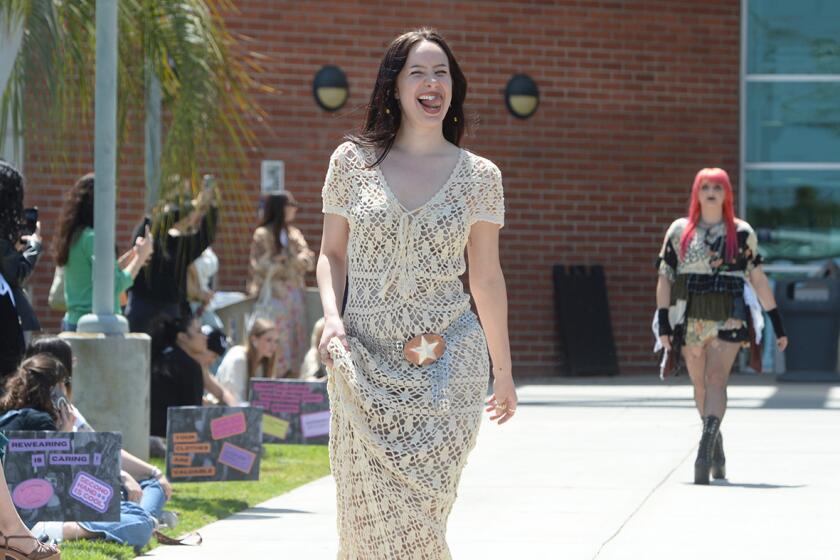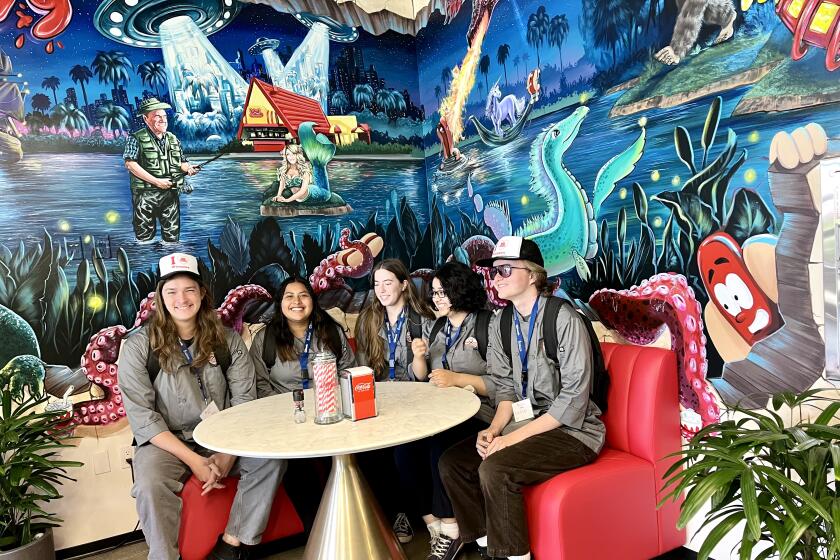‘I’d like to be alone with this boy’: Hollywood photographer recalls Marilyn, Liz and a rocky start to a star-filled career
You may have thought entertainment industry photographer Douglas Kirkland had seen it all.
He photographed Jack Nicholson biting a burning match, Marilyn Monroe under white silk sheets, Mick Jagger and Keith Richards in a music video and Julie Andrews on a mountaintop for “The Sound of Music.”
And yet the 82-year-old Hollywood Hills photographer has no plans to stop.
“Photography has been very good to me,” Kirkland said. “I understand the world better through my camera.”
During “An Evening with Douglas Kirkland” in Costa Mesa at the Canon Live Learning Orange County on April 7, Kirkland addressed photographers and photo enthusiasts about his five-decade career and his most recent work on the sets of “The Promise,” due out April 21, and “The Great Gatsby” with Leonardo DiCaprio in 2013. He also discussed working with choreographer Debbie Allen on her latest musical.
But the road started off rocky.
After moving to New York City in 1957, Kirkland snagged a job assisting photographer Irving Penn, but the $60-a-week pay was not enough to live on. Penn told him didn’t deserve a raise.
Kirkland gave himself a year to solidify a job in the city and, at 25, got a staff job offer from Look magazine.
One of the first assignments would change his career trajectory. A writer asked Kirkland to accompany him to an interview with Elizabeth Taylor. It was 1961, and the movie star hadn’t been photographed for some time, after falling ill with pneumonia. False rumors of her death circulated.
Taylor agreed to the interview but not pictures.
After the interview, Kirkland approached Taylor and admitted he was new to the magazine.
“I shook her hand and looked her in the eyes and said, ‘Elizabeth, could you imagine what it would mean to me if you could give me an opportunity to photograph you?’ ”
She paused and then asked him to return to her hotel at 7:30 p.m.
Kirkland’s portrait of Taylor became his first Look cover, and it ran in other magazines all over the world. Later that year, he went on the road with Judy Garland, shooting her for a month.
Having shot the elusive Taylor led him to photographing Monroe for the magazine’s 25th anniversary.
She requested a bed, silk sheets, Dom Pérignon and Frank Sinatra records.
“I was very nervous because everyone had photographed her, and I was the junior,” Kirkland said. “I had such a fear. She was stunning and had a special glow about her.”
Monroe dismissed her assistant and agent from the photo shoot.
“ ‘I’d like to be alone with this boy,’ ” he remembered her saying.
The pictures would be published eight months before she died in 1962.
Aside from photographing John Wayne, Sophia Loren and Coco Chanel — the latter requested he learn French — Kirkland worked on more than 100 movies sets, including “Butch Cassidy and the Sundance Kid,” “Out of Africa” and “Titantic.”
He also worked on subjects as varied as astronomy in Chile, the Trans-Siberian railroad and fashion in Bali. He has authored photography books on Monroe, Chanel and Michael Jackson and “Freeze Frame,” a decade-by-decade look behind the scenes of 50 years photographing the entertainment industry.
His “Freeze Frame” exhibition is now in the permanent collection of Academy of Motion Picture Arts and Sciences in Beverly Hills, and his work also is in the permanent collections of the Smithsonian Institution and the Annenberg Space for Photography in Los Angeles, among other museums and galleries.
From April 26 to May 10, the Mouche Gallery in Beverly Hills will unveil “Douglas Kirkland: Beyond the Lens,” an exhibition featuring a compilation of the photographer’s most prominent images captured throughout his 50-year history.
Kirkland said he enjoys sharing his images with others and suggests to any budding photographer to truly care about his or her subject.
“You ask yourself, ‘What is interesting about this person? What can I show? What are the usual characteristics that make them interesting or beautiful?’ ” Kirkland said. “I always hope for something that works and if it doesn’t, I continue to take pictures.”
“Give me a Canon, and a beautiful lady or a gentleman, and I can make magic,” Kirkland said. “That’s what it’s all about — make your own magic.”
Twitter: @KathleenLuppi
All the latest on Orange County from Orange County.
Get our free TimesOC newsletter.
You may occasionally receive promotional content from the Daily Pilot.




